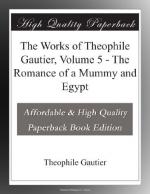|
This section contains 4,086 words (approx. 14 pages at 300 words per page) |

|
SOURCE: "The Thematic Function of Sexual Identity in Théophile Gautier's Comédie De La Mort," in Nottingham French Studies, Vol. 16, No. 1, May, 1977, pp. 38-50.
In the following essay, Burnett interprets Gautier's Comédie as a heroic confrontation with mortality and a struggle for sexual self-knowledge and artistic wholeness.
The decade of the 1830's in France was marked by a lively interest in questions of sexual identity. The clear delineation of masculine and feminine impulses characteristic of the neo-classical perspective yielded to more ambivalent views of sexuality during the era introduced by the "bataille d'Hernani".
This change originated through a combination of social and æsthetic considerations. Gender stereotypes were flaunted by feminist "lionnes" such as George Sand and by the revellers who favoured transvestite costumes for the frequent masked balls of the period. The remarkably numerous followers of Ganneau, the self-styled Mapah (mother/father) of the Evadanist (Eve...
|
This section contains 4,086 words (approx. 14 pages at 300 words per page) |

|


